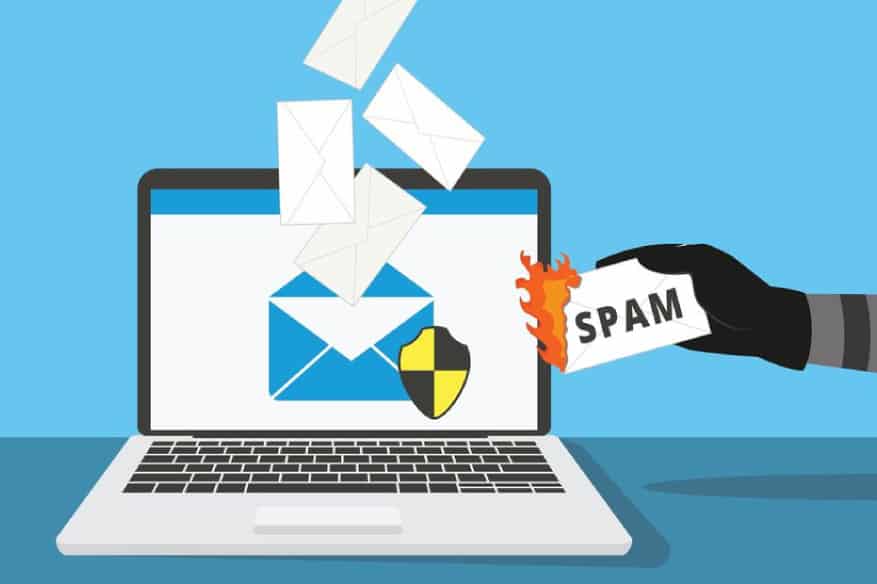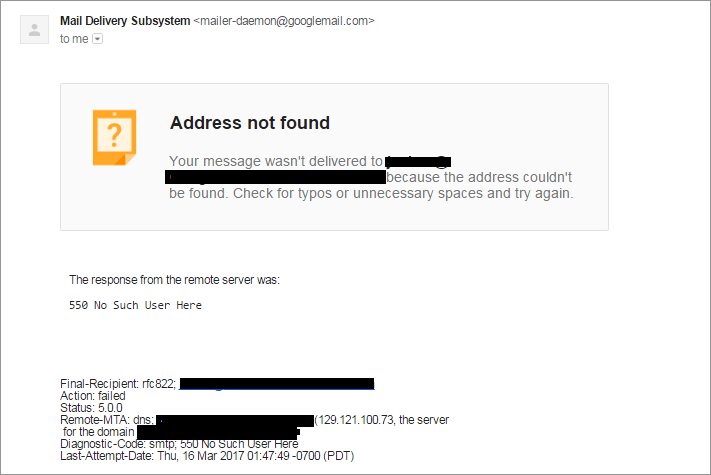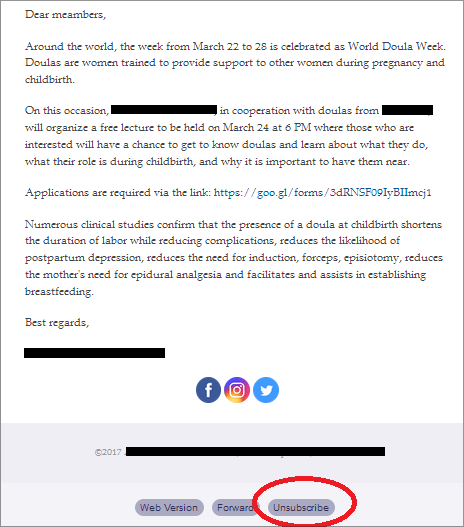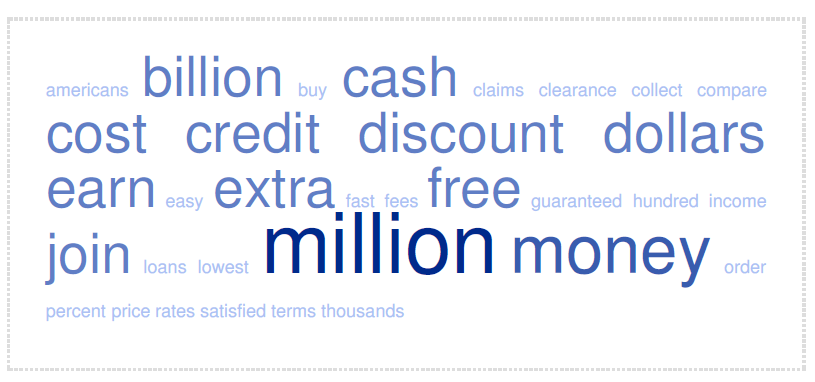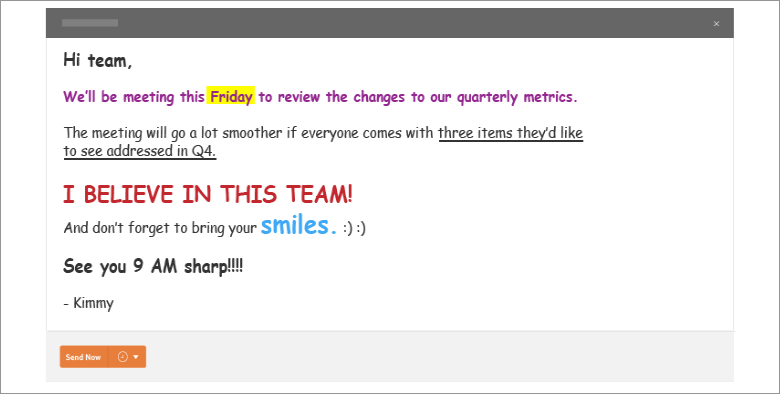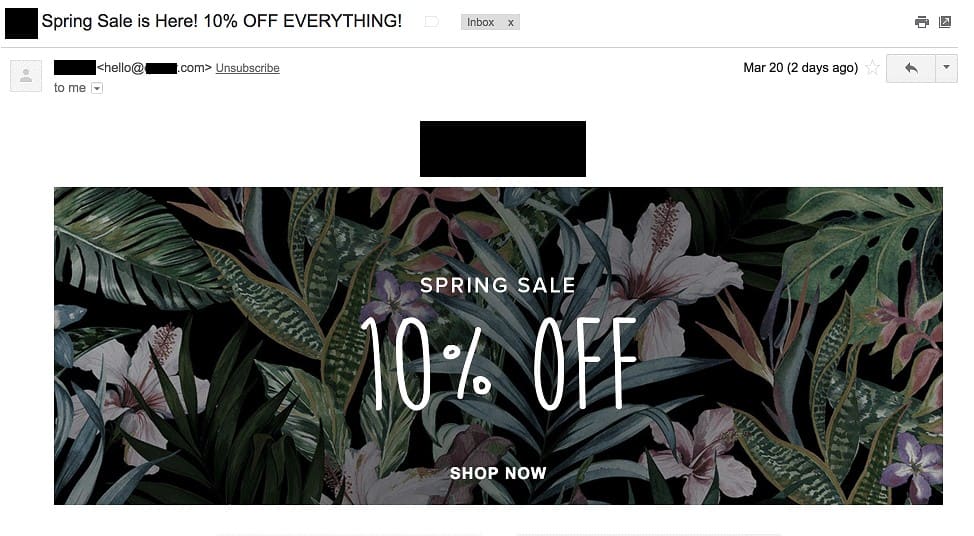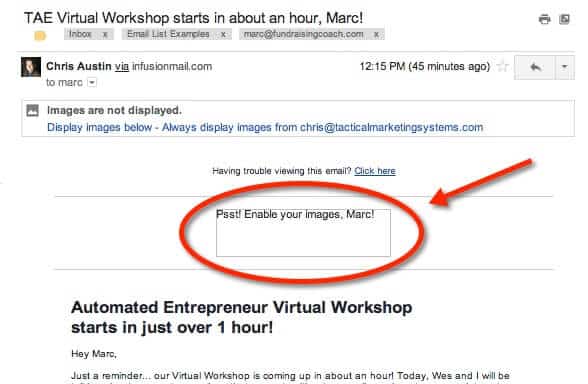Most businesses make use of email marketing and therefore have to think about spam traps, triggers and anti spam laws when creating targeted mails.
Creating targeted mails has become quite an art, cause one has to avoid lading up in your subscribers spam box or being marked as a spammer by your subscribers.
ISP’s are determined to provide a service where spammers are delt with efficiently, however, collateral damage is unfortunately unavoidable and some email marketers with good intentions sometimes end up in the spam box. Mostly due to non-experience or simply just because they have bad luck when it comes to email marketing.
Research shows that plus minus only 70% of genuine mail marketers reach their subscribers and this can be caused by the smallest error on the senders part with serious repercussions.
Most major internet countries have restricted the use of email spamming and ISPs seem to be doing a pretty good job to protect their clients.
Below we will be going through some tested methods of how to avoid spam traps and filters making sure your marketing mails reach their destination.
What is a Spam trap and a Spam filter
Spam traps are normally an ISP’s first defense against spammers.
Spam traps are actually email addresses with a specific purpose of identifying and tracking spammers.
So if your email hist one of these addresses, you will immediately be flagged as a spammer and your IP address and domain will be blocked, causing your deliverability rates to plummet.
This can take up to a year to restore your reputation.
There is also a thing such as recycled spam traps. These are inactive email addresses acquired by ISP’s after a certain period of inactivity.
If you hit one of these email addresses the consequences are not so great and you are able to walk away from this with only an email notification from your ESP or your clients ESP informing you that you are emailing a dormant address.
Should you however continue sending emails to dormant email addresses, the ISP will eventually record it as spam.
Spam filters are second in the line of defense against spam. This gets set up by ISP’s and is a program that uses different criteria to filter out unwanted mail and such mail does not even reach it’s destination.
Marketing emails are placed under magnifying glass and the smallest details are investigated to make sure that irrelevant and poor content never reaches subscribers inboxes.
Herewith the list of things to avoid when doing your email marketing:
- Apply close attention to technicalities
- Use a senders name that is recognizable
- Carefully select and choose your ESP
- Get a third party certificate
- Make sure if you are a black listed sender
- Before sending your emails test them
- Keep yourself educated with the latest spam filter technologies, anti spam laws and ISP practices
- Keep your emails lists clean
- Do not buy email lists ever
- Remove any hard bounce emails from your list immediately
- Stay up to date with your subscribers and pay attention to dormant ones
- Request for subscriptions twice
- Respect an unsubscribers choice
- Keep your subject lines healthy
- Never shout at people
- Avoid words that set off spam triggers
- Keep your word
- Have a healthy email body
- Stay clear of rich media content
- Don’t embed forms
- Don’t include attachments
- Keep fonts and colors simple
- Don’t have too many images
- Make sure your images display correctly
- Have your mail plain text and HTML
- Ensure correct grammar and spelling
- User friendly un-subscription
- Do not neglect the follow up
1. Apply Close Attention to Technicalities
To maximize your email deliverability there are a few technical issues surrounding this process to you can take to ensure your market related emails reach subscribers inboxes.
2. Use a senders name that is recognizable
It’s a good practice to always strive to send emails from an email address that contains preferably your personal name with your brand name so that the recipients recognize you.
Why? Simply because in the sea of emails they receive every day, they have to choose which ones to open. And people prefer to open those which include a personal name in the ‘from’ box, rather than impersonal, generic one.
A study by Finances Online shows that 45% of email recipients will click spam based solely on the info they see in the ‘from’ field, name and email address.
Email addresses such as firstnamelastname@domain or any variation are always a good choice.
Moreover, leading Email Service Providers (ESPs) tend to pay close attention to the ‘from’ field. Why? Because spam technology also has reputation-based filtering that gathers information about the source of the message (IP address and domain) among other things. Changing the source IP address often signals shady business to ESPs. They will alert the ESP to perform a check on you. And if you inadvertently choose a blacklisted address, your email will be filtered out. Ultimately, changing the email address frequently will confuse the receivers that will feel tempted to mark you as spam.
You can prevent this from happening by avoiding:
- a. frequent changes of “from” field names
- b.obscure ‘From’ field names such as: 1258gps@doman; noreply@domain
For example, avoid
3. Carefully select and choose your ESP
Email Service Providers gain good reputation based on the good reputation of their clients.
If ESP’s clients send out valuable and relevant content and have high scores on their IP addresses, their ESP becomes trustworthy. Steering clear from disreputable ESPs is a must, as their IP addresses usually get blocked by reputable ESPs such as Gmail, Yahoo! Mail or Hotmail.
4. Get a Third Party Certificate
There is also a possibility of getting a sender accreditation by a third party that acts as a guarantee to the ISPs that you are not a spammer.
There are companies, like ReturnPath, that assess your email practices and certify you as a trusted sender. This certificate guarantees that your emails will reach a majority of the inboxes you send emails to since it signals to ISP to let your emails bypass spam filters.
This is not a free service but is probably worth investing in since the money you spend can return with increased conversions.
5. Make sure if you are a black listed sender
If your IP address has a bad reputation in the virtual world, your targeted emails are more likely to land in the spam folder. The reputation of your IP address affects your email deliverability rates directly.
There are certain tools, like Multirbl.Valli or MxToolbox, that let you check if you are a blacklisted sender.
All it takes is to enter IP address or domain name in the box, and click ‘check’.
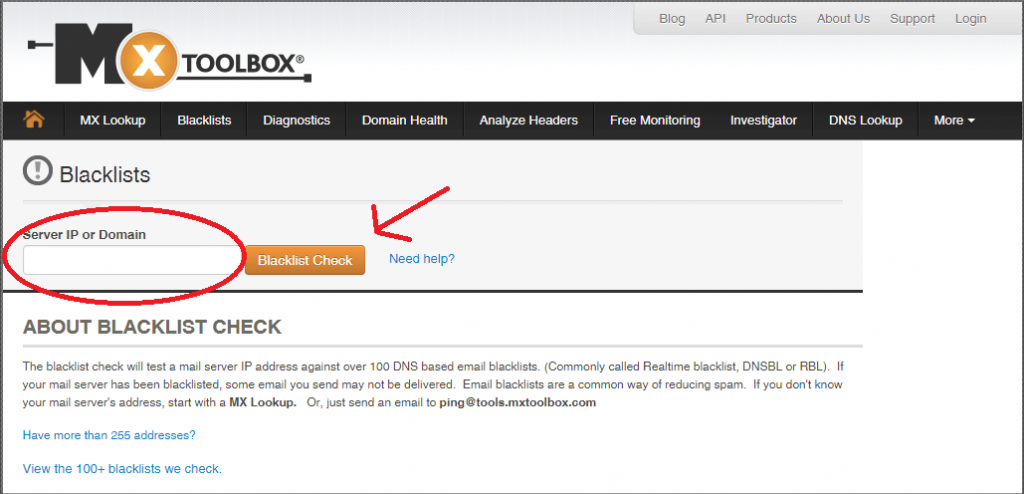
6. Before sending your emails, test them
It is always a good idea to test your emails before you actually send them to your subscribers.
For example, Mail Tester helps you test the quality of your emails. It mimics spam filters and literally tests for spammyness. The score you get might help you improve deliverability.
7. Keep your self educated with the latest spam filter technologies, anti spam laws and ISP practices
This might seem like a tedious and boring task since it requires you to be constantly alert to the technological changes and the upcoming laws.
However, your constant learning and improvement will only benefit your triggered email marketing campaigns in the long run.
8. Keep a clean email list
To avoid spam traps and spam filters it is essential you keep a good email list hygiene. Here are some tips to help you with that:
9. DO NOT buy email lists
Purchasing an email list is wrong on so many levels that I don’t know where to begin.
Legally, it represents a violation of your ISP’s Terms of Service. Also, owing to the CAN-SPAM act, selling or transferring email addresses to other lists is illegal. It also represents a violation of privacy of the people whose addresses are on the list as they never accepted to be contacted by you.
Finally, the study from Convince and Convert shows that email lists that have 10% or more unknown user addresses only have 44% of their emails delivered by ISPs!
These lists contain info that is out of date and as such, usually contain inactive or dormant addresses or recycled spam traps. What’s worse is that you don’t know if these lists are harvested. If they are, the chances are they will contain pure spam traps, a one-way ticket to email marketing hell. So stay away from them!
10. Remove any hard bounce emails from your list immediately
As I already explained, sending a number of emails to an inactive address will eventually be recorded by the ISP as a spam trap hit. Bounce rates are one of the important factors ISPs keep track of to determine your sender reputation. And a bad reputation will damage your deliverability.
Pay attention to the notification of the bounce ISP sends you and delete the problematic email from your list.
11. Stay up to date with your subscribers and pay attention to dormant ones
If you notice that some of your subscribers are not opening, reading and clicking your emails, you should act upon it.
Inactive subscribers might damage the reputation of your company’s domain which directly influences deliverability rates. So, either launch a re-engagement campaign or unsubscribe those you don’t get a feedback from.
12. Request for subscriptions twice
Make sure your subscribers really want to hear from you.
Upon subscription, send them another email where you ask them to confirm they do indeed want to receive emails from you. The double opt-in helps you keep your list neat and clean, and your domain reputation pristine.
Ask subscribers to add you to their contact list
This is a simple trick to help you bypass rigorous spam filters.
If a subscriber adds you to their address book, it signals to the ISP that your IP address is whitelisted and that your subscriber wants to receive your emails.
Most spam filters work like this. So don’t be shy and ask them!
13. Respect an Unsubscribers choice
One of the main postulates of the CAN-SPAM Act is that you should provide the unsubscribe option, always.
It’s the law. If people want to unsubscribe, let them go. Make their journey easy by making it a one-step process, and respect their wishes – never email them again.
14. Keep your subject lines healthy
As the old proverb states and a Placebo song, the devil is in the details. This applies to the art of email marketing in general, especially when it comes to crafting subject lines.
As per the same data from Convince and Convert, 69% of the people will mark an email as spam based on the subject line they see. In order to avoid that, make sure not to do the following:
15. Never SHOUT at people
In the etiquette of email communication or any Internet communication, using upper case to write words and sentences is usually seen as shouting, and is considered rude and disrespectful. So avoid using all capital letters in the subject lines.
In the research conducted by the Radicati Group, the majority of the people surveyed, 85%, showed preference of an all lowercase subject line.
Subject lines written in uppercase will not only annoy the receivers, who will feel tempted to mark your email as spam, but it will also alert spam filters.
- Don’t use multiple exclamation points
In order to draw people’s attention to your email, it is important to craft a witty, inquisitive subject lines, and a relevant, short email.
As a matter of fact, the research shows that email subject lines that end with a question mark have 44% higher open rates than those that contain exclamation points.
Don’t create drama and sensation by using multiple exclamation points in a row because the chances are they will come across as spammy to the receivers, and to the ISPs.
16. Avoid words that set off spam triggers
To avoid hitting spam filters and getting caught in them, pay attention to the wording of your subject lines.
Certain words and phrases, such as ‘free’, ‘best price’, ‘cash’, ‘no obligation’ have been blacklisted owing to their association with the spam mail. Recall all those emails we used to get that offered a free prize in the subject line in return for following a couple of steps of which you learn once you open the email.
Spam trigger words were usually collected from emails such as these, and should be avoided.
Ultimately, HubSpot offers these as examples of the good subject lines:
“Hi [name], [question]?”
“Did you get what you were looking for?”
“You are not alone.”
“Feeling blue? Like puppies?”
17. Keep your word
In order to avoid being marked as spam, it is important to align the subject line with what you offer in the email. In other words, avoid writing spammy emails described in the paragraph above.
If your subject line states: “Hello Jovana, a quick question?”, then indeed do include a short question easy to answer to. Deliver on what you promise in the subject line. Because, if your email copy doesn’t correspond with the offer in the subject line, it is more likely people will mark your email as spam.
18. Have a healthy email body
Spam filters rigorously scrutinize your copy as well. ISPs go as far as to mark emails as spam based on the specific content or images.
Everything matters, the design, the fonts, the attachments, the embeds, the images, everything. Even the most bizarre things, such as using the word ‘viagra’, can alert the spam filters. The devil is in the details, and here, the best policy is to keep the details to the minimum and to simplify, as much as possible.
Here are some tips on how to craft an email copy that’ll bypass the spam filters and appeal to your subscribers:
19. Stay clear of rich media content
A majority of email clients don’t allow the ability to view rich media content, such as video embeds and Flash, so avoid putting them in your emails.
If you do insert them, and they don’t show or work properly, it will seem sloppy and messy to your clients. This can damage your credibility as the email will seem spammy.
If the media content is essential to your marketing campaign, put it on your website and insert a link to it in your copy. For example, if you want the subscribers to see a video, include an image with a play button that, once clicked, will lead your clients to the particular video on your website.
Also, avoid using JavaScript and other dynamic scripts, as they will alert the spam filters.
Your clients usually don’t allow the dynamic scripts to function, so using them will create pretty much the same effect as the media content that doesn’t show properly.
20. Don’t embed forms
Embedding forms in your email copy represent another red flag to the spam filters. Forms represent a security risk and aren’t usually supported across common email clients.
Instead of including embedded forms, you can either link to the page you wish them to visit, or insert a call-to-action button.
21. Don’t include attachments
Attaching files to your emails, like Word documents or PDFs, alerts spam filters immediately. Attached files also increase the size of your email, so consequentially, it takes them longer to load.
You can bypass this by placing the particular document on your website and providing a link, or a CTA that leads to the document’s location.
22. Keep fonts and colors simple
People seem to pay a lot of attention to the fonts and colors used in the copy. In the previously mentioned Radicati Group study, over 60% of the people surveyed found it unacceptable if the email marketers used irregular fonts, different font sizes and font colors. And over 70% of people declared that they prefer one size fonts.
Here’s an example taken from HubSpot that shows what NOT to do:
Irregular font colors and sizes also alert spam filters, and the same goes for invisible text (white font on the white background for example). So simplify!
23. Don’t have too many images
Even though we live in an era where pictures and images dominate all spheres of life, it seems that in email marketing you can have one too many.
Including a lot of images, or big images will increase the load time of your email, which can affect deliverability rates.
Making your copy in the form of one big image will also probably get it stuck in spam. For example, Microsoft Outlook doesn’t recognize background images so an email like this will probably not be displayed correctly:
To avoid this, make sure to include images that are relevant to the content and complement it. Resize the images if necessary, but take special care not to damage their visual integrity. And always, always, host your images at credible services.
24. Make sure your images display properly
Some email users allow the display of images while others block images altogether. Your images won’t show correctly to the users who block images, which will make your email seem spammy, messy and sloppy.
To avoid that don’t miss to add intelligible, unambiguous alt text in your image. This is how alt-text looks like
SourceAlt text can be easily edited and can also be added with custom variables as apparent in the above image.
25. Have your mail in plain text and HTML
Take time to craft both a plain text and an HTML version of your email. The former allows you to be plain and simple, the latter lets you loose your inner designer (just don’t overdo it).
This way, you appeal to different people, but you also establish your legitimacy with the ISP.
Make sure that your code is correct. If your email includes broken or incomplete tags, the spam filters will probably prevent it from reaching the desired inbox.
26. Ensure correct grammar and spelling
Spell-checking and proofreading are essential components of every good email marketing campaign. Incorrect spelling and faulty grammar will damage your credibility with your clients and make you seem unprofessional.
The Radicati Group study shows that 80% of the people surveyed find grammar and spelling errors a capital emailing offense. It makes you seem unreliable and untrustworthy.
These errors are also major spam triggers. So do take the time to edit and proofread.
27. User friendly unsubscription
I have already mentioned the importance of offering an easy way out of your emailing campaign. It’s the law, and it’s a good professional practice.
Include an unsubscribe button or link in each and every one of your emails. Thus, you protect your reputation and credibility with your clients and the ISP.
28. Do not neglect your follow ups
Never send emails just to send them. Try to offer valuable, engaging and relevant content because this is probably the only way to avoid being marked as spam.
A steady flow of communication is important if you are following up with your clients or if you are trying to re-engage the inactive ones.
Instead of opting for massive blasts (that tend to reek of spam) that you send from time to time, try to space them evenly, after shorter periods of time, just to remind your clients that you are there.
This way, you will have a firmer grasp on the inactive ones, preventing them from cluttering your email list or becoming possible spam traps. And the active ones will appreciate your effort and value.
Conclusion
Unfortunately, there is no magic formula that guarantees your emails won’t land in spam. ISPs, ESPs and anti-spam laws are brutal, and there is no definite guide to help you deal with the deliverability issues.
By paying attention to technical issues, cleaning email lists, taking good care to avoid all spam triggers in the subject lines and email bodies, and by following up appropriately and in a timely manner, you are more likely to preserve your credibility, sender reputation and protect your IP address and domain from ever getting blacklisted.
As spam technology is everything but solid ground, I would love to hear your input, experiences, and comments, so feel free to comment.

